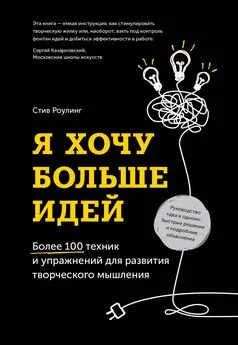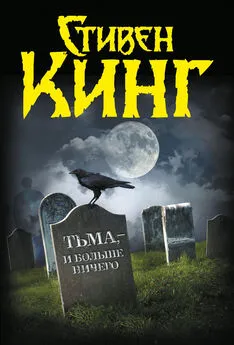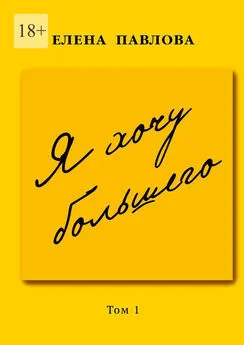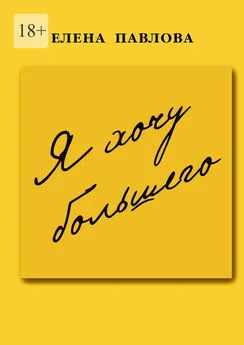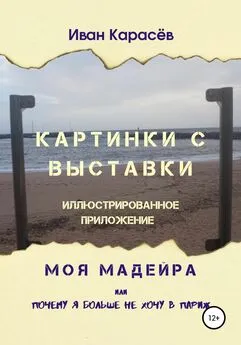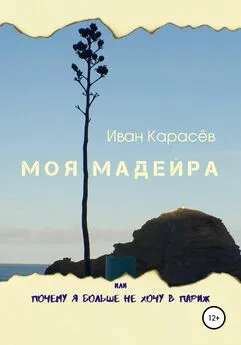Стив Роулинг - Я хочу больше идей
- Название:Я хочу больше идей
- Автор:
- Жанр:
- Издательство:Манн, Иванов и Фербер
- Год:2018
- Город:Москва
- ISBN:9785001173250
- Рейтинг:
- Избранное:Добавить в избранное
-
Отзывы:
-
Ваша оценка:
Стив Роулинг - Я хочу больше идей краткое содержание
Я хочу больше идей - читать онлайн бесплатно ознакомительный отрывок
Интервал:
Закладка:
Argyris, C. (1991) Teaching smart people how to learn, Harvard Business Review, May — June.
Bauer, J.C. and Simmons, P.R. (2000) Role ambiguity: A review and integration of the literature, Journal of Modern Business, 3, 41–47.
Behavioural Insights Team (2014) EAST: Four Simple Ways to Apply Behavioural Insights. Cabinet Office.
Berger, J. (2013) Contagious: Why Things Catch On. Simon & Schuster.
Beveridge, W.I.B. (1957) The Art of Scientific Investigation. W.W. Norton & Co.
Bochner, S. (1965) Defining in tolerance of ambiguity, Psychological Record, 15(3), 393–400.
Booker, C. (2009) The Seven Basic Plots: Why We Tell Stories. Continuum.
Burnette, C. (2009) An emotional basis for design thinking.
Buster, B. (2013) Do/Story: How to Tell Your Story so the World Listens. The Do Book Company.
Bystedt, J., Lynn, S. and Potts, D. (2003) Moderating to the Max: A Full Tilt Guide to Creative, Insightful Focus Groups and Depth Interviews. Paramount Market Publishing.
Cholle, F.P. (2011) The Intuitive Compass: Why the Best Decisions Balance Reason and Instinct. Jossey-Bass.
Cleese, J. (2012) Address to Cannes International Festival of Creativity, 2012.
Coats, E. (2012) 22 #storybasics I’ve picked up in my time at Pixar.
Coats, E. (n. d.) Pixar Rules of Storytelling.
Grivas, C. and Puccio, G. (2012) The Innovative Team: Unleashing Creative Potential for Breakthrough Results. Jossey-Bass.
Davies, S. (2013) Laughology: Improve Your Life with the Science of Laughter. Crown House Publishing.
Diehl, M. and Stroebe, W. (1991) Productivity loss in idea-generating groups: Tracking down the blocking effect, Journal of Personality and Social Psychology, 61(3): 392–403.
Deacon, T. (1997) The Symbolic Species: The Co-evolution of Language and the Human Brain. Penguin.
Duncan, K. (2014) The Ideas Book: 50 Ways to Generate Ideas More Effectively. Lid Publishing.
Eberle, B. (2008) SCAMPER: Creative Games and Activities for Imagination Development. Prufrock Press.
Firestien, R. (1996) Leading on the Creative Edge: Gaining Competitive Advantage through the Power of Creative Problem Solving. Pinon Press.
Flyvbjerg, B. (2006) From Nobel Prize to project management: Getting risks right, Project Management Journal, 37(3), 5–15.
Geschka, H. (1979) Methods and organisations of idea generation. Creativity Week Two. 1979 Proceedings. Centre for Creative Leadership.
Grivas, C. and Puccio, G. (2012) The Innovative Team: Unleashing Creative Potential for Breakthrough Results. Jossey-Bass.
Hague, P. (1995) Interviewing: The Market Research Series. Kogan Page.
Halpern, D. (2015) Inside the Nudge Unit: How Small Changes Can Make a Big Difference. W.H. Allen.
Heffernan, M. (2015) Beyond Measure: The Small Impact of Big Changes. TED Audio Books.
Hertz, N. (2013) Eyes Wide Open: How to Make Smart Decisions in a Confusing World. William Collins.
Janis, I. (2002) Victims of group think: A Psychological Study of Foreign-Policy Decisions and Fiascoes. Wadsworth.
Kahn, R., Wolfe, D., Quinn, R., Snoek, J. and Rosenthal, R. (1964) Organizational Stress: Studies in Role Conflict and Ambiguity. Wiley.
Kersting, K. (2003) What exactly is creativity? Psychologists continue their quest to better understand creativity, American Psychological Association, 34 (10).
King, Z. (2011) Who Is in Your Camp? The Social Life of Ideas blog.
Klein, G. (2014) Seeing What Others Don’t: The Remarkable Ways We Gain Insights. Nicholas Brealey Publishing.
Klein, G. (1998) Sources of Power: How People Make Decisions. MIT Press.
Kohn, N. and Smith, S.M. (2011) Collaborative fixation: Effects of others’ ideas on brainstorming, Applied Cognitive Psychology, 25 (3), 359–371.
Kolko, J. (2014) Well Designed: How to Use Empathy to Create Products People Love. Harvard Business Review Press.
Kolko, J. (2015) Design thinking comes of age, Harvard Business Review, September.
Kremer, W. and Hammond, C. (2013) Abraham Maslow and the Pyramid that Beguiled Business. BBC World Service.
Lawrence, P.R. and Noria, N. (2002) Driven: How Human Nature Shapes Our Choices. Jossey-Bass.
Levitin, D.J. (2014) The Organised Mind: Thinking Straight in an Age of Information Overload. Penguin Books.
Lois, G. (2012) Damn Good Advice (For People with Talent): How to Unleash Your Creative Potential by America’s Master Communicator. Phaidon Press.
Lynch, C. (2014) Business writers, here’s why you really need to master the parts of speech.
Marshall, H. (2015) Natural narratives. BBC Academy website.
McCaffrey, A. (2013) www.innovationaccelerator.com.
Mueller, J. (2014) Managers reject ideas customers want, Harvard Business Review, July — August.
Mueller, J.S., Melwani, S. and Goncalo, J.A. (2010) The Bias Against Creativity: Why People Desire But Reject Creative Ideas. Cornell University ILR School.
New Scientist (2015) Are you deluded? The strange things we believe, New Scientist, 4 April.
New York Times Customer Insight Group (2015) The Psychology of Sharing. New York Times.
Novak, J.D. (1998) Learning, Creating and Using Knowledge: Concept Maps as Facilitative Tools for Schools and Corporations. Routledge.
Osborn, A. (1948) Your Creative Power. Scribner.
Page, S.E. (2007) The Difference: How the Power of Diversity Creates Better Groups, Firms, Schools and Societies. Princeton University Press.
Parnes, S. (1981) The Magic of Your Mind. Creative Education Foundation.
Passuello, L. (n.d.) Tackle any issue with a List of 100.
Paulus, P.B. and Yang, H-C. (2000) Idea generation in groups: A basis for creativity in organisations, Organisation and Behaviour and Human Decision Processes, 82 (1), 76–87.
Puccio, G.J. and Miller, B. (1996) Targeting: Tool for Evaluation and Group Consensus, 42nd Annual Creative Problem Solving Institute, Buffalo, New York.
Puccio, G.J., Murdock, M.C. and Mance, M. (2005) Current developments in creative problem solving for organizations: A focus on thinking skills and styles, The Korean Journal for Thinking and Problem Solving, 15 (2), 43–76.
Robinson, K. (2010) Changing education paradigms. TED Talks.
Rogers, E.M. (2003) Diffusion of Innovations.5th edition. Simon & Schuster.
Rowlands, J. (2015) Don’t Tell The Bride: The Alternative Guide to the Ultimate Wedding. Blink Publishing.
Sachs, J. (2012) Winning the Story Wars: Why Those Who Tell — and Live — the Best Stories Will Rule the Future. Harvard Business School Publishing.
Schulz, K. (2015) Being Wrong: Adventures in the Margins of Error. Portobello Publishers.
Selfe, C.K. (n.d.) Brainstorming Research Elements as a Team by Mind Mapping. The Proposal Centres.
Simonton, D.K. (2013) Creativity in science, in Fesit, G. and Gorman, M., Handbook of the Psychology of Science. Springer Publishing Company.
Simonton, K. (1999) Origins of Genius: Darwinian Perspectives on Creativity. Oxford University Press.
Stevens, M. (2015) Speech to Children’s Media Conference, UK, July.
Tauber, E.M. (1972) Heuristic ideation technique: A systematic procedure for new product search, Journal of Marketing, 36 (1), 58–61.
Tetlock, P. (2005) Expert Political Judgment: How Good Is It? How Can We Know? Princeton University Press.
Tetlock, P. and Gardner, D. (2015) Superforecasting: The Art and Science of Prediction. Random House.
Thomas, D. (2015) Networking workshops.
University of Foreign Military and Cultural Studies (2012) Red Team Handbook. UFMCS.
Watt Smith, T. (2015) The Book of Human Emotions. Profile Books.
Weich, J. (2013) Storytelling on Steroids: 10 Stories that Hijacked the Pop Culture Conversation. BIS Publishers.
Woolard, A. (2015) BBC Taster: first week.
Wuchty, S., Jones, B.F. and Uzzi, B. (2007) The increasing dominance of teams in the production of knowledge, Science, 316 (5827): 1036–1039.
Zenasni, F., Besançon, M. and Lubart, T. (2008) Creativity and tolerance of ambiguity: An empirical study, The Journal of Creative Behavior, 42 (1), March.
Благодарности
Спасибо всем, кто помогал мне развивать мои творческие способности. Спасибо Линде Грин за то, что наставила меня на новый путь. Спасибо Мари Крук за то, что направляла меня, пока я писал эту книгу. Спасибо всем моим начальникам и коллегам, которые на протяжении моей долгой карьеры на телевидении позволяли мне опробовать идеи, казавшиеся мне блестящими.
Мы благодарны за разрешение воспроизвести материалы, защищенные авторским правом.
Изображения в разделе 3.5 Обзор, 3.5 Разбор, 6.1 Обзор, 6.1 Разбор, «Просто подай мне знак!»адаптированы из Traffic Signs Regulations and General Directions 2002, © Crown copyright. Содержит государственную информацию, лицензированную в соответствии с открытой правительственной лицензией (Open Government Licence (OGL) v3.0) www.nationalarchives.gov.uk/doc/open-government-licence/version/3/.
Об авторе
Стив Роулинг — бывший журналист BBC, продюсер по развитию и инструктор. Он проработал 20 лет в отделе новостей и документального телевидения, сотрудничая с различными командами телеканала, включая «Драму», «Детский отдел», «Спорт» и «Естественную историю». Был одним из преподавателей программы творческого подхода к управлению в академии BBC. В настоящий момент работает независимым тренером и консультантом, специализирующимся на творческом мышлении и искусстве повествования.
Максимально полезные книги
Если у вас есть замечания и комментарии к содержанию, переводу, редактуре и корректуре, то просим написать на be_better@m-i-f.ru, вы поможете нам исправить недочеты и стать лучше.
Наши электронные книги
Дарите электронные книги
mann-ivanov-ferber.ru
blog.mann-ivanov-ferber.ru
facebook.com/mifbooks
vk.com/mifbooks
twitter.com/mifbooks
instagram.com/mifbooks
youtube.com/user/mifbookstv
Дерево знаний
Предложите нам книгу
Ищем правильных коллег
Полезные книги в подарок
Корпоративная библиотека
Читать дальшеИнтервал:
Закладка:
